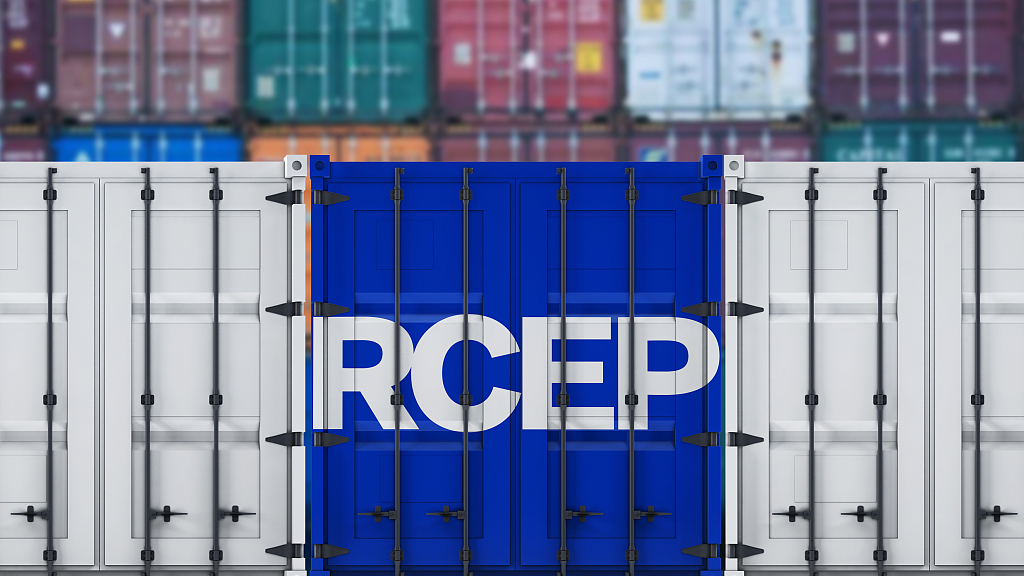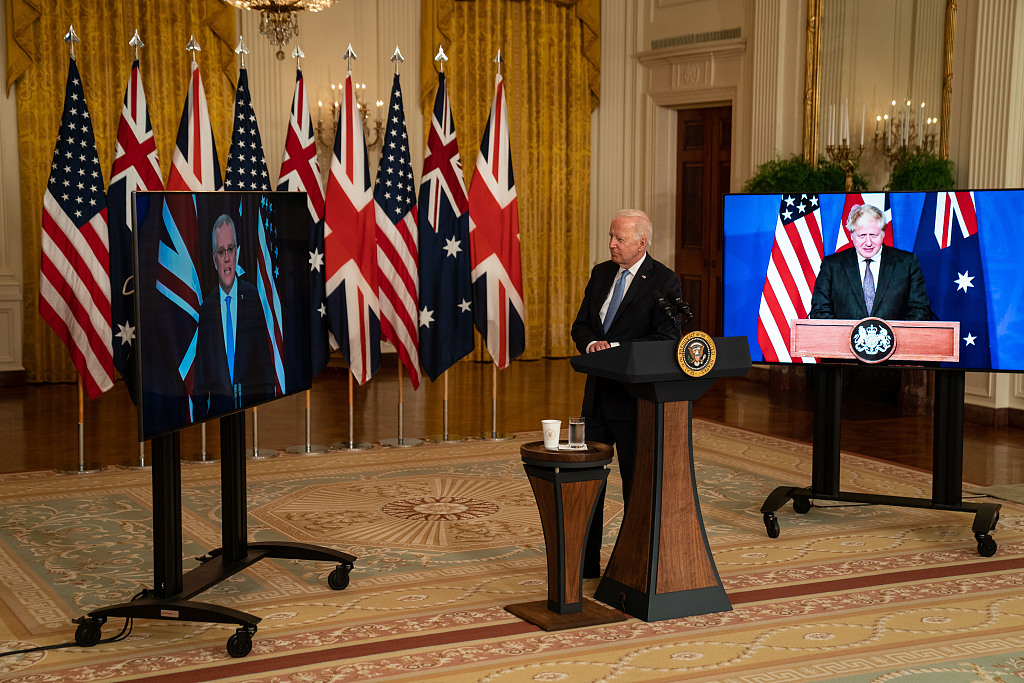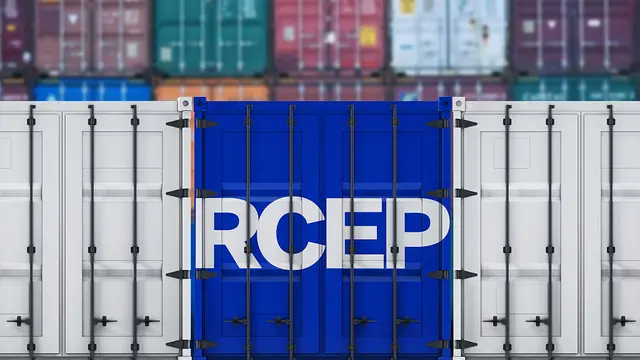
VCG
**Editor's note: **Daryl Guppy is an international financial technical analysis expert. He has provided weekly Shanghai Index analysis for mainland Chinese media for more than a decade. Guppy appears regularly on CNBC Asia and is known as "The Chart Man." He is also a national board member of the Australia China Business Council. The article reflects the author's opinions and not necessarily the views of CGTN.
The new year brings together two contradictory strains of policy in the ASEAN region. The first is the commencement of the world's largest economic deal, the inclusive RCEP agreement, which smooths the trade relationship while the other deal, AUKUS, has changed the way Australia set its relationship with China, which may hinder RCEP from reaching its objectives.
RCEP promotes cooperation but AUKUS assumes conflict.
America's cold war mentality is one factor at play with the AUKUS agreement. It seems that America always needs to create an enemy. Since its founding in 1776, America has been at war in 93 percent of years.
The second factor is Australia's fear of Asia, particularly China. The current Australian government is uncomfortable with a sophisticated and advanced Asia.
The UK's dream of restoring a British empire is the third factor. Boris Johnson has an outdated idea of his country's position and influence in the world.
Clearly designed to counter China, AUKUS is an extension of America's Indo-Pacific tilt first articulated by President Barack Obamain 2011. Australia wants to entangle the United States so the latter won't leave the region. The current leadership in Australia is trying to create a sense of obligation by buying U.S. defense equipment, being even more anti-China than the U.S., and by taking the lead in expressing some U.S. foreign policies. AUKUS is based on the false belief thatChina wants to take over other countries.
Australia's current belligerence represents a move away from diplomacy. It reduces Australia's ability to exert influence in the region through trade agreements like RCEP because Australia is seen as a proxy for America. But this is not 1970 when Asia was less cohesive and developed and easier for Western countries to bully into compliance.
Now the region is well-developed, confident, politically sophisticated and keenly aware of China's importance. China is a geographical fact of life and Australia is out of step with this reality.
Support from India and Japan for AUKUS is not a surprise. They are members of the QUAD alliance so they support any effort to contain China. A concern for the region with the QUAD is the way it supports a re-emergence of Japan's military ambitions. Australia seems unaware of these concerns amongst countries in the ASEAN region.India may be the least reliable member of the QUAD as it continues to buy advanced weapons from Russia.

U.S. President Joe Biden delivers remarks about a national security initiative to announce that the U.S. will share nuclear submarine technology with Australia as he is joined virtually by Australian Prime Minister Scott Morrison and British Prime Minister Boris Johnson, in the East Room of the White Housein, Washington, D.C., U.S., September 15, 2021. /VCG
AUKUS is a coalition of Western countries which cannot accept that China is the most significant economic and political player in the region. The QUAD is also a thinly disguised anti-China alliance. AUKUS and the QUAD lead to a reduction of Australia's diplomatic influence in the region because Australia is seen as a proxy for the U.S. This undermines the ability to maintain peace in the region and to effectively participate in RCEP.
RCEP is a major step toward trade and investment in the region because it provides the opportunity to develop consistent processes for cross-border trade.One feature that currently slows supply lines is all the different customs requirements and the different levels of paperwork involved.
The agreement provides a platform where a common process can be agreed upon. This will have a significant impact on the supply and value chain. RCEP also provides a new platform which can be used to smooth out some trade relationships because everyone is gathered around the table. RCEP will help resolve some existing bilateral trade problems.
The RCEP trade agreement operates under the WTO rules framework. It is a multilateral trade agreement, which makes it easier to define and achieve common objectives. RCEP is an open agreement that does not exclude any country on political grounds, which makes it very compatible with WTO objectives. RCEP stands in contrast to some other multilateral agreements which are designed to exclude certain countries.
The reduction in tariffs and the application of common tariffs is a plus for industrial sectors. Besides the importance of protecting the early development of some industrial sectors, it is also true that opening up these sectors will increase innovation.
The most important impact is on the digital infrastructure amongst the RCEP members. Agreement about common operating standards, cross-border trade protocols and trade settlement processes will deliver the largest benefits to industries and consumers. This will be a challenge for Australia's involvement if the country persists with the American approach of rejecting any standardsand trade protocols developed by China. Alternatively, this is also a great opportunity for Australia to show its willingness to accept the common standards approved by RCEP members.
Just how these two contradictory policy strands can be reconciled will be a major focus in the ASEAN region in 2022. The preferred outcome is that the goodwill inherent in RCEP will prevail.
(If you want to contribute and have specific expertise, please contact us at [email protected].)
 简体中文
简体中文



